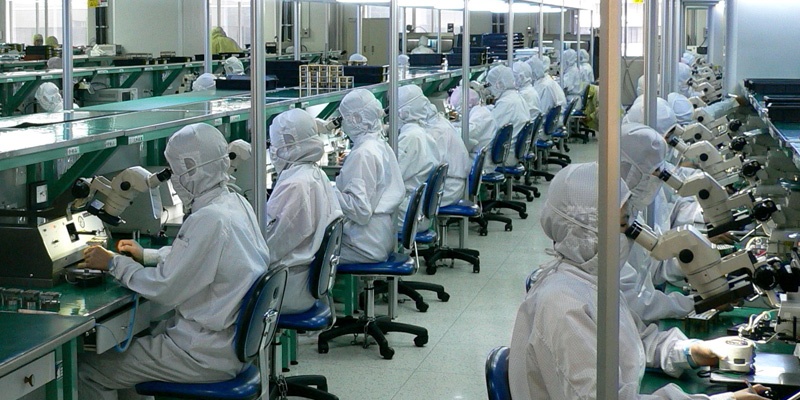What is ISO 7 Cleanroom?

ISO 7 Cleanrooms are controlled environments designed to minimize contamination from airborne particles, chemical vapors, and biological materials. These cleanrooms are classified under the ISO 14644-1 standard, which defines cleanrooms based on the maximum allowable particle counts per cubic meter of air. A ISO 7 cleanroom is typically suitable for manufacturing processes that require a moderate level of cleanliness, such as in the pharmaceutical, biotechnology, and Electronics industries.
ISO 7 Cleanroom temperature Requirements

Maintaining the appropriate temperature in an ISO ISO 7 cleanroom is crucial for ensuring product integrity and optimal working conditions. Generally, the temperature range for a ISO 7 cleanroom is between 20°C and 24°C (68°F to 75°F). This specific range helps to reduce the risk of particle generation from equipment and personnel.
1. Temperature Control Mechanisms: Modern cleanrooms utilize sophisticated HVAC (heating, ventilation, and air conditioning) systems to maintain consistent temperature levels. These systems are able to respond to fluctuations in external conditions and internal activities, ensuring that the temperature remains stable.
2. Impact on Processes: Certain processes, particularly in the pharmaceutical and electronics sectors, are sensitive to temperature changes. For instance, chemical reactions can be adversely affected by even slight deviations from the optimal temperature, leading to compromised product quality.
3. monitoring and Compliance: Continuous temperature monitoring is essential to ensure compliance with ISO7 standards. Data loggers and alarms are often employed to track temperature variations, alerting personnel to any deviations that could affect the controlled environment.
ISO 7 Cleanroom humidity Requirements

1. Importance of Humidity Control
Maintaining humidity within this range is vital to prevent the growth of microorganisms and to minimize static electricity, which can be detrimental in sensitive manufacturing processes. High humidity can lead to condensation, while low humidity can increase static charge, both of which pose risks to product integrity.
2. Methods for Humidity Regulation
Advanced HVAC systems are utilized to regulate humidity levels effectively. Dehumidifiers and humidifiers may be employed to adjust moisture levels based on real-time monitoring of the cleanroom environment.
3. Monitoring Systems
Similar to temperature control, humidity levels are continuously monitored using specialized sensors. These sensors provide real-time data, allowing for quick adjustments and ensuring that the cleanroom conditions remain within the specified limits.
ISO 7 Cleanroom Particle Count
Particle Count Standards:
As mentioned earlier, the maximum allowable particle count for ISO 7 cleanrooms is 352,000 particles per cubic meter for particles 0.5 micrometers and larger. This standard is crucial for industries where even minute levels of contamination can affect product quality.
Monitoring Techniques:
Particle counters are used to measure the concentration of airborne particles within the cleanroom environment. These devices can provide real-time feedback and are essential for ensuring compliance with ISO standards.
Impact of Particle Count on Operations:
High particle counts can lead to increased defects in products and may require costly rework or scrapping of materials. Maintaining low particle counts is therefore essential for operational efficiency and product reliability.
| Particle Size | Max Count (particles/m³) |
|---|---|
| ≥0.5 µm | 352,000 |
| ≥1.0 µm | 83,200 |
| ≥5.0 µm | 2,900 |
What is the Pressure in ISO 7 Cleanroom?

1. Positive Pressure Maintenance
ISO 7 cleanrooms are typically maintained at a positive pressure relative to surrounding areas. This prevents unfiltered air from entering the cleanroom, thus minimizing contaminationfrom external environments. Positive pressure is achieved through the use of specialized HVAC systems that constantly supply clean, filtered air into the room.
2. Pressure Differential Standards
The standard pressure differential for an ISO 7 cleanroom is generally maintained at about 15 to 20 Pascals (Pa) above adjacent areas. This slight pressure difference is crucial for preventing the ingress of particulates and airborne contaminants from less clean areas.
3. Monitoring Pressure Levels
Continuous monitoring of pressure levels is essential to ensure that the cleanroom remains in compliance with ISO standards. Pressure sensors and alarms are used to provide real-time data, alerting personnel if the pressure drops below the required levels. Maintaining the correct pressure not only helps in contamination control but also ensures the safety of personnel working in the cleanroom environment.
ISO 7 Cleanroom Gowning Requirements

Gowning Process
The gowning process typically involves several layers of protective clothing, including coveralls, hoods, gloves, and shoe covers. Each layer serves a specific purpose: coveralls protect against particulate contamination from clothing, while hoods prevent hair and skin flakes from entering the cleanroom environment. Gloves and shoe covers further minimize the transfer of contaminants.
Material Selection
The materials used for cleanroom garments are designed to be low-linting and non-static, reducing the potential for particle generation. Fabrics are often made from synthetic materials that do not shed fibers, which is critical in A CleanRoom setting.
Training and Compliance
Personnel must be trained in proper gowning techniques to ensure compliance with Cleanroom standards. This training includes instructions on how to put on and remove garments correctly to avoid contamination.
 +86 18186671616
+86 18186671616 Jason@cleanroomequips.com
Jason@cleanroomequips.com
 MENU
MENU




















